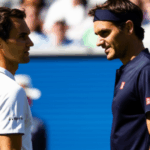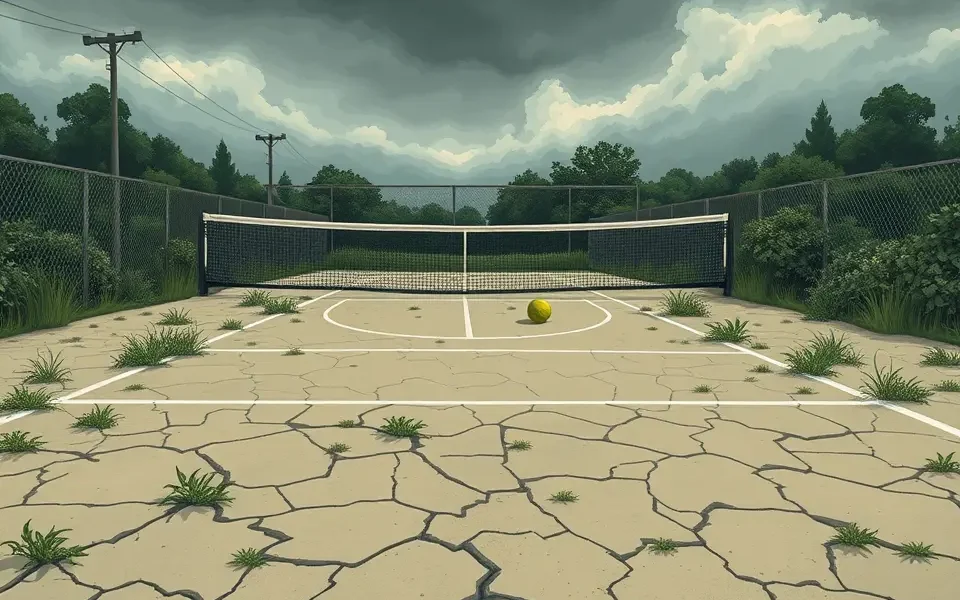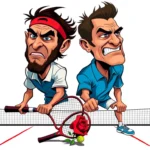Rafael Nadal, a name synonymous with grit, strategy, and unparalleled success in tennis, has recently voiced concerns about the sport’s future. His warning: tennis must evolve or face potentially dire consequences. But what exactly are these concerns, and what changes might be necessary to keep tennis thriving?
Nadal’s Core Argument: Stagnation and the Rise of Power
Nadal’s critique centers around what he perceives as a lack of evolution in the rules and a growing emphasis on sheer power, especially the serve. He argues that as players become taller and more athletic, the serve’s dominance could lead to a situation where it becomes virtually impossible to break serve against certain players. This, in turn, could create a less competitive and less entertaining sport.
“Tennis has not changed in terms of rules at all,” stated Nadal, emphasizing the “decisive impact” that a shot like the serve has today. “If power is not limited, the moment will come when a player with good movement and over two meters tall will dominate: it will be impossible to break him and compete against him,”
While acknowledging that this type of player hasn’t fully emerged yet, Nadal sees the potential for it and believes preventative action is necessary. He even referenced Novak Djokovic’s recent success at the Miami Open as evidence that the anticipated shift isn’t imminent. This observation suggests that while Nadal sees the trend, he also recognizes that the current top players still possess the all-around game needed to compete effectively.
The Modern Game: A Shift in Dynamics
Nadal isn’t alone in observing the changes in tennis. The modern game, compared to previous eras, features:
- Increased Power: Racquet and string technology advancements have led to faster serves and groundstrokes. Players are hitting the ball harder than ever before.
- Baseline Dominance: Matches are increasingly played from the baseline, with players relying on powerful groundstrokes and spin to dictate play.
- Athleticism: Players are now, on average, taller, stronger, and faster than in previous generations. This increased athleticism has impacted all aspects of the game, including serve power, court coverage, and endurance.
The Potential Consequences: A Sport Transformed?
If Nadal’s concerns materialize, the consequences for tennis could be significant:
- Decreased Competitiveness: If dominant servers become unbeatable, the sport could become less about strategy and skill and more about who can serve the fastest. This could lead to less exciting matches and predictable outcomes.
- Reduced Variety: A focus on power could discourage players from developing a more diverse skillset, such as net play, creative shot-making, and tactical variations.
- Fan Disengagement: If the sport becomes too predictable or lacks excitement, fans may lose interest, impacting viewership, ticket sales, and overall revenue.
Potential Solutions: Tweaking the Formula
Addressing these concerns requires a multifaceted approach. Here are some potential solutions:
1. Rule Modifications
- Serve Restrictions: Limiting serve speed or implementing a “second serve plus one” rule (where the server must win the point within one shot after the second serve) could reduce the serve’s dominance.
- Shorter Sets or Matches: Experimenting with different scoring formats, such as shorter sets or tiebreak matches, could create more unpredictable and exciting contests.
- No-Ad Scoring: This format, already used in some tournaments, eliminates advantage scores in games, making them faster and potentially more unpredictable.
2. Equipment Regulations
- Racquet Restrictions: Limiting racquet head size, frame stiffness, or string tension could reduce the power generated by racquets.
- Ball Modifications: Using slightly larger or heavier balls could slow down the game and encourage more rallies.
3. Court Surface Adjustments
- Slower Court Surfaces: Making court surfaces slightly slower could reduce the effectiveness of power-based games and promote more all-court play.
4. Emphasizing Skill Development
- Coaching Focus: Encouraging coaches to prioritize developing a well-rounded game, including net play, strategy, and shot variation, could counter the trend towards power-only tennis.
- Junior Development Programs: Implementing programs that emphasize skill development and tactical awareness from a young age could help create more versatile players.
The Importance of Adaptability: Learning from History
Tennis has evolved throughout its history, adapting to changing technologies, player styles, and societal trends. From the early days of lawn tennis to the modern era of power and athleticism, the sport has consistently reinvented itself.
- The Rise of Open Tennis: The decision to allow professional players to compete in Grand Slam tournaments in 1968 marked a significant turning point, ushering in a new era of competition and professionalism.
- Technological Advancements: The introduction of graphite racquets and synthetic strings in the 1970s and 80s revolutionized the game, leading to increased power and spin.
- The ATP and WTA: The formation of these organizations helped professionalize the sport, establish rankings, and create more opportunities for players.
Challenges to Evolution: Resistance and Tradition
Despite the need for change, implementing these solutions won’t be easy. Tennis is a sport steeped in tradition, and any proposed modifications are likely to face resistance from various stakeholders:
- Players: Some players, particularly those who rely on power, may resist changes that could diminish their advantage.
- Governing Bodies: The various governing bodies of tennis (ATP, WTA, ITF) may struggle to agree on a unified approach to addressing these issues.
- Fans: Some fans may resist changes to the traditional format of the game, even if those changes are intended to improve the sport’s long-term health.
The Legacy of Nadal: More Than Just Results
Nadal’s concern for the future of tennis reflects his deep passion for the sport. Throughout his career, he has been known not only for his incredible athleticism and skill but also for his sportsmanship, dedication, and respect for the game’s traditions.
As Nadal himself stated:
“I think as a tennis player, I just want to be remembered for the results I had.”
However, his legacy extends far beyond his impressive trophy collection. He is a role model for aspiring players and a respected voice within the tennis community. His warnings about the sport’s future should be taken seriously.
A Call to Action: Preserving the Essence of Tennis
Rafael Nadal’s warning serves as a call to action for the tennis world. While the sport enjoys immense popularity and global appeal, it cannot afford to rest on its laurels. By carefully considering the potential consequences of the current trends and proactively implementing appropriate changes, tennis can ensure that it remains a vibrant, competitive, and entertaining sport for generations to come. It’s about preserving the essence of tennis – the blend of skill, strategy, athleticism, and mental fortitude – that has captivated fans for over a century.








No Comment! Be the first one.